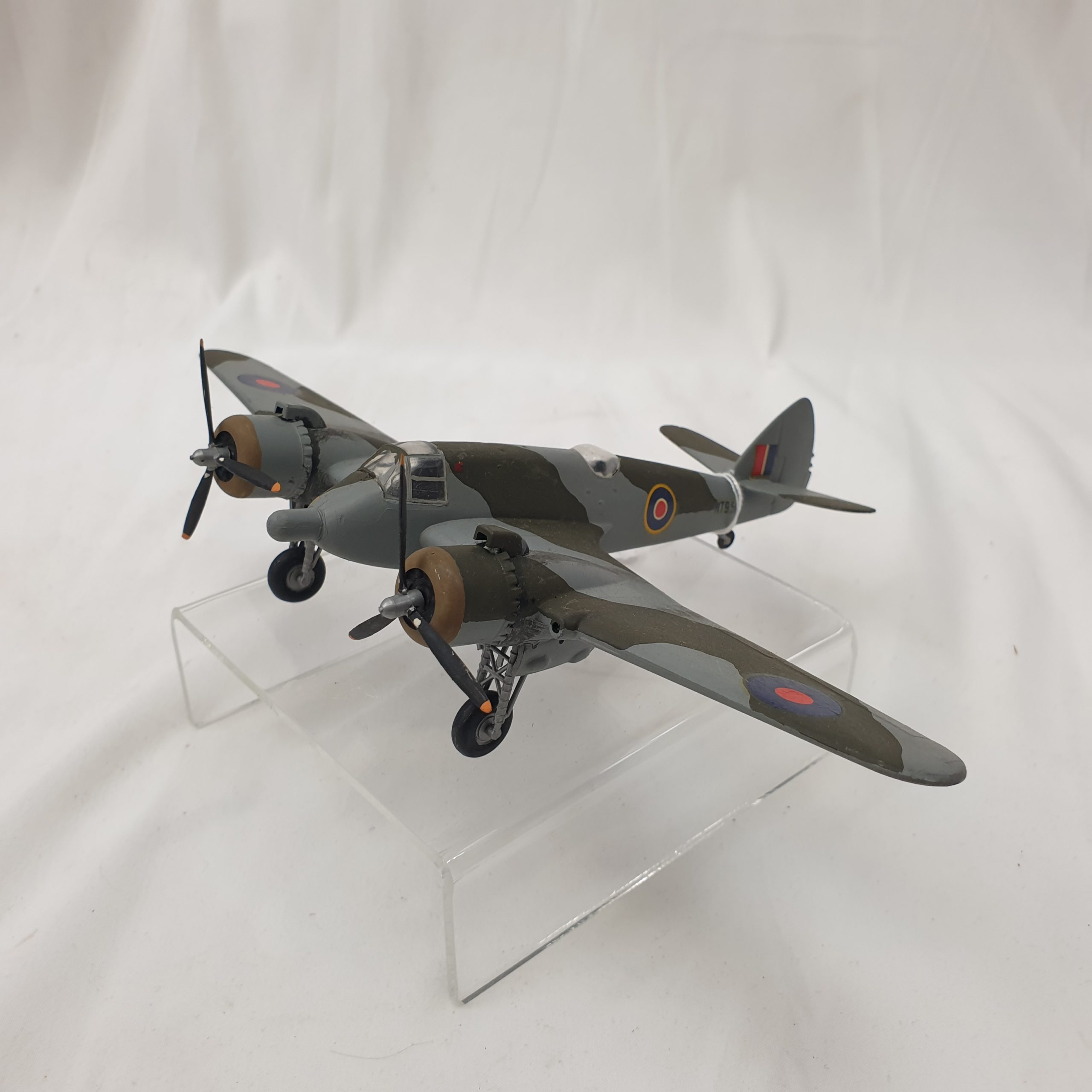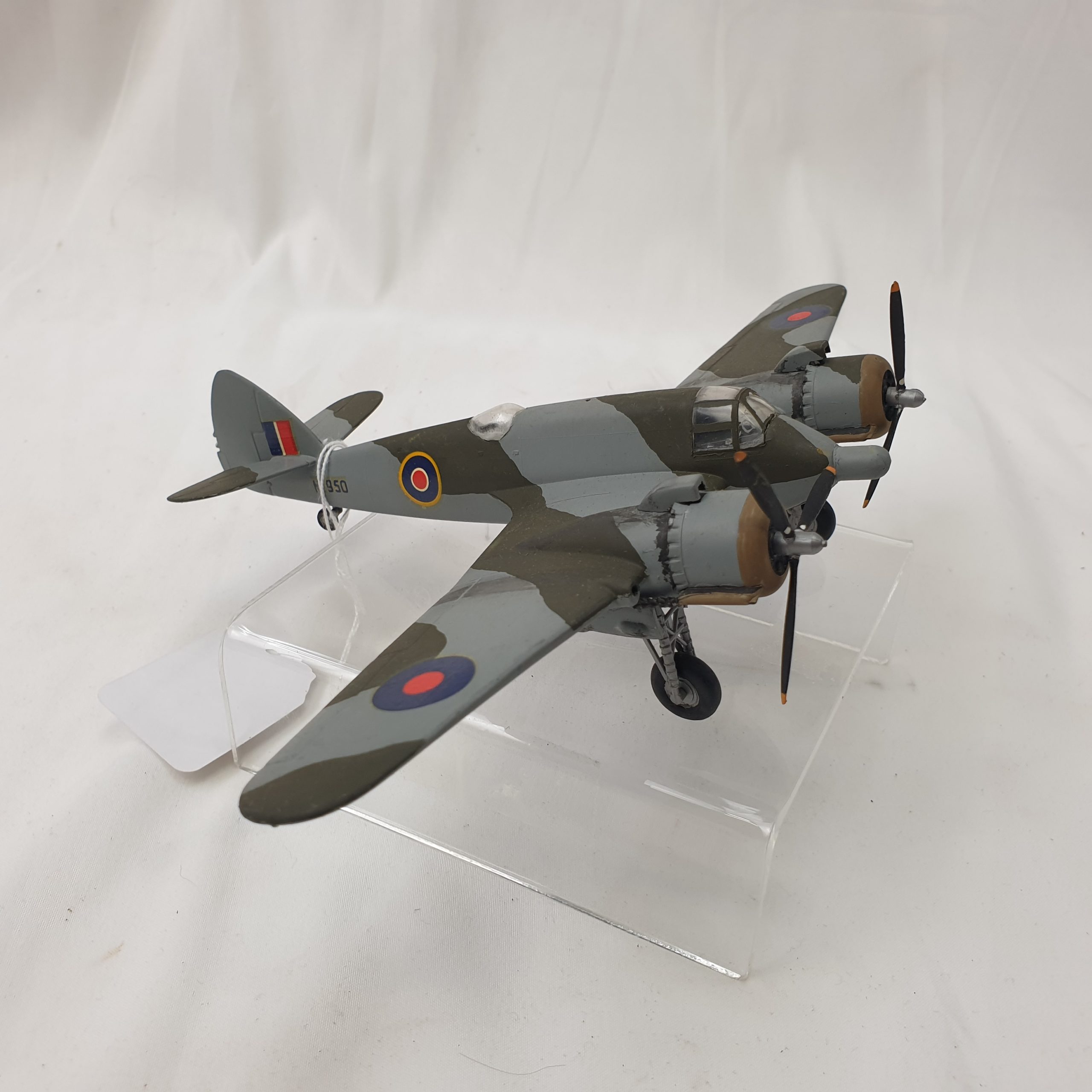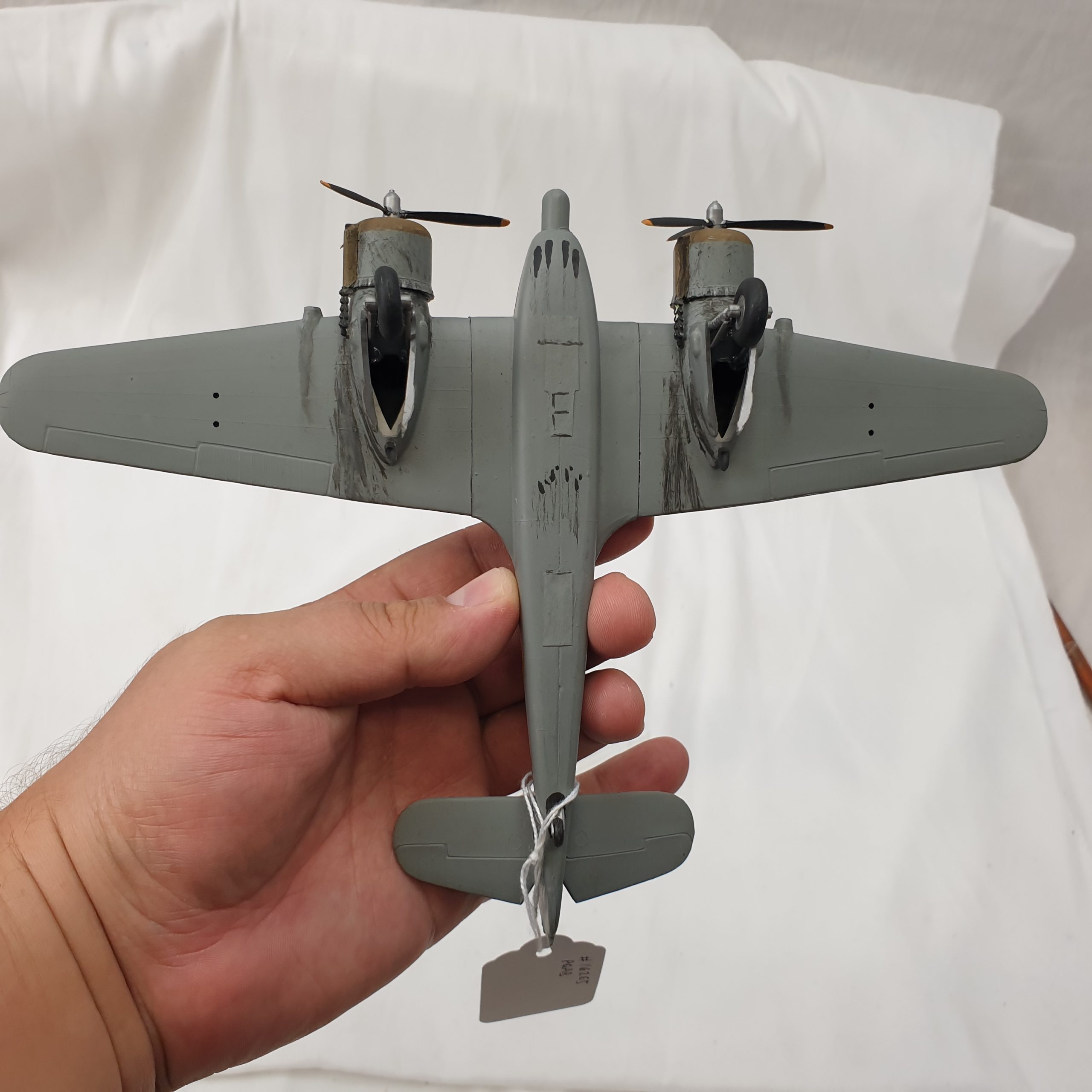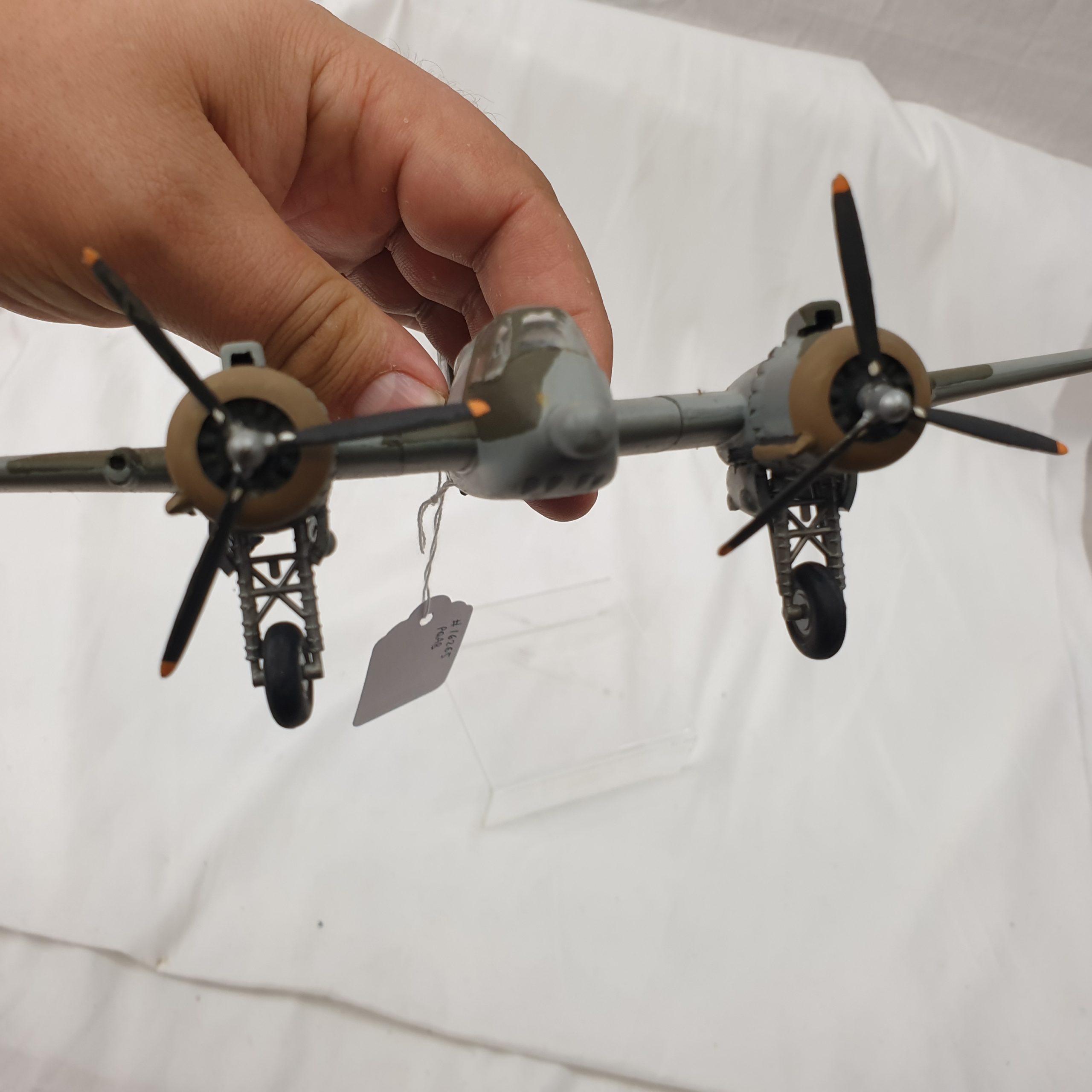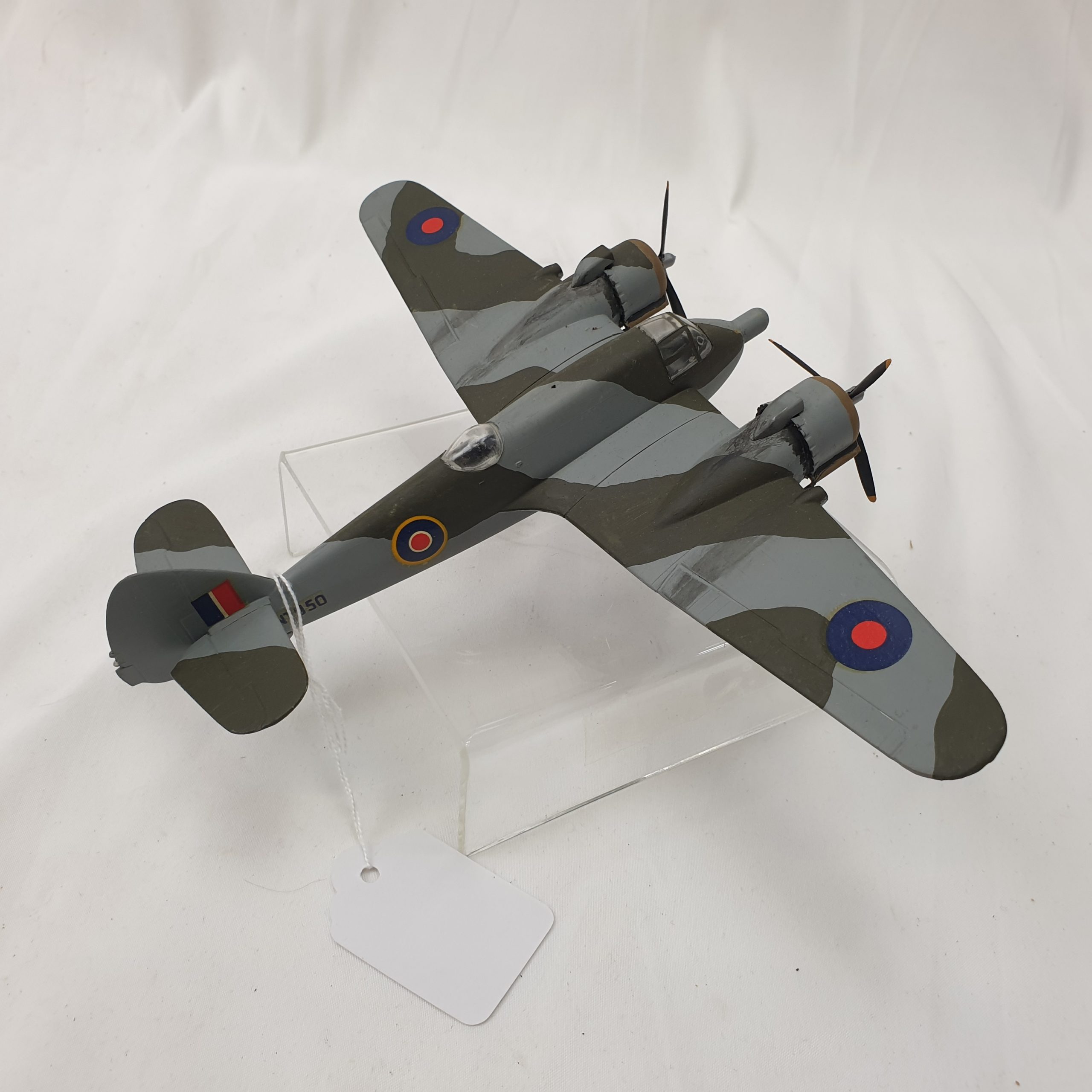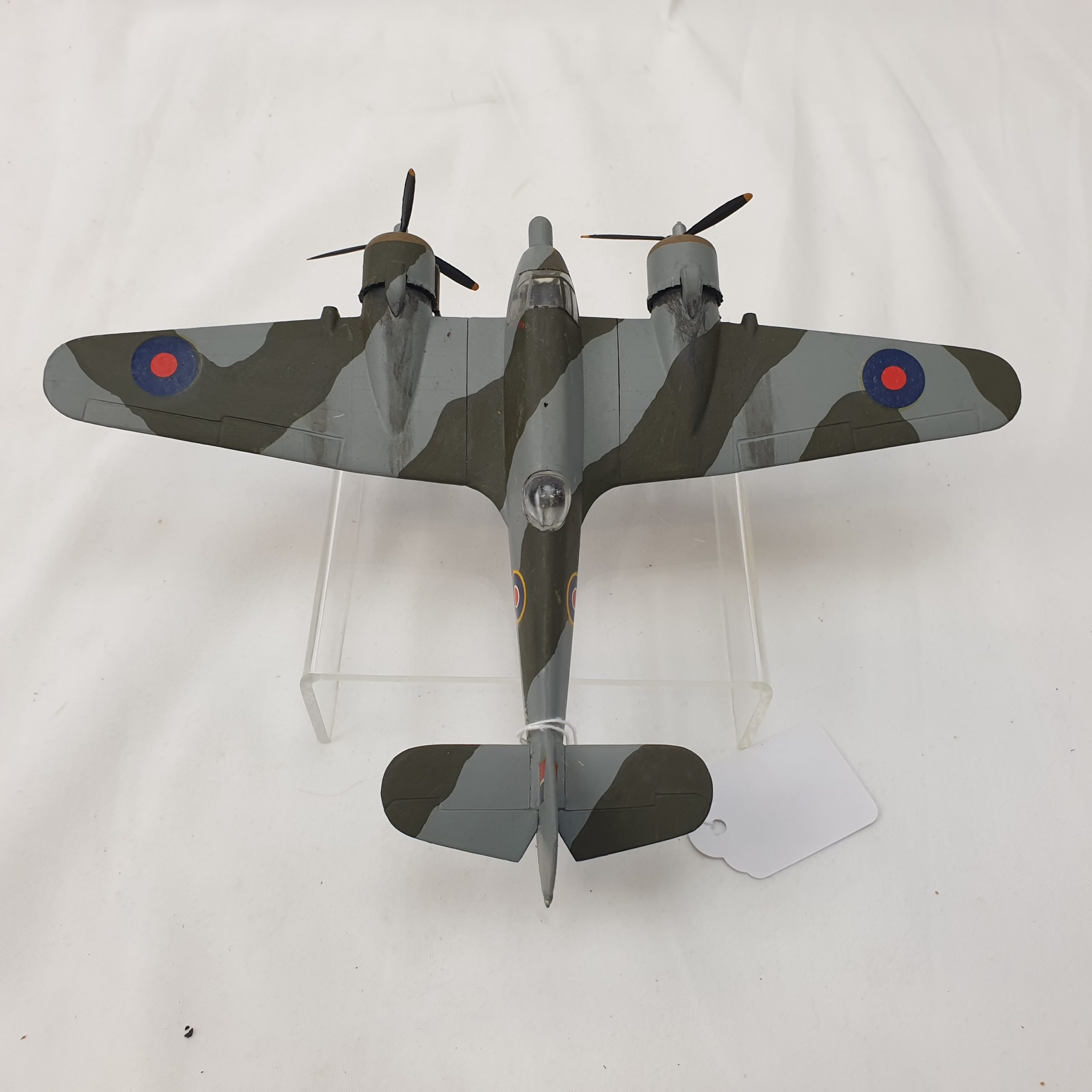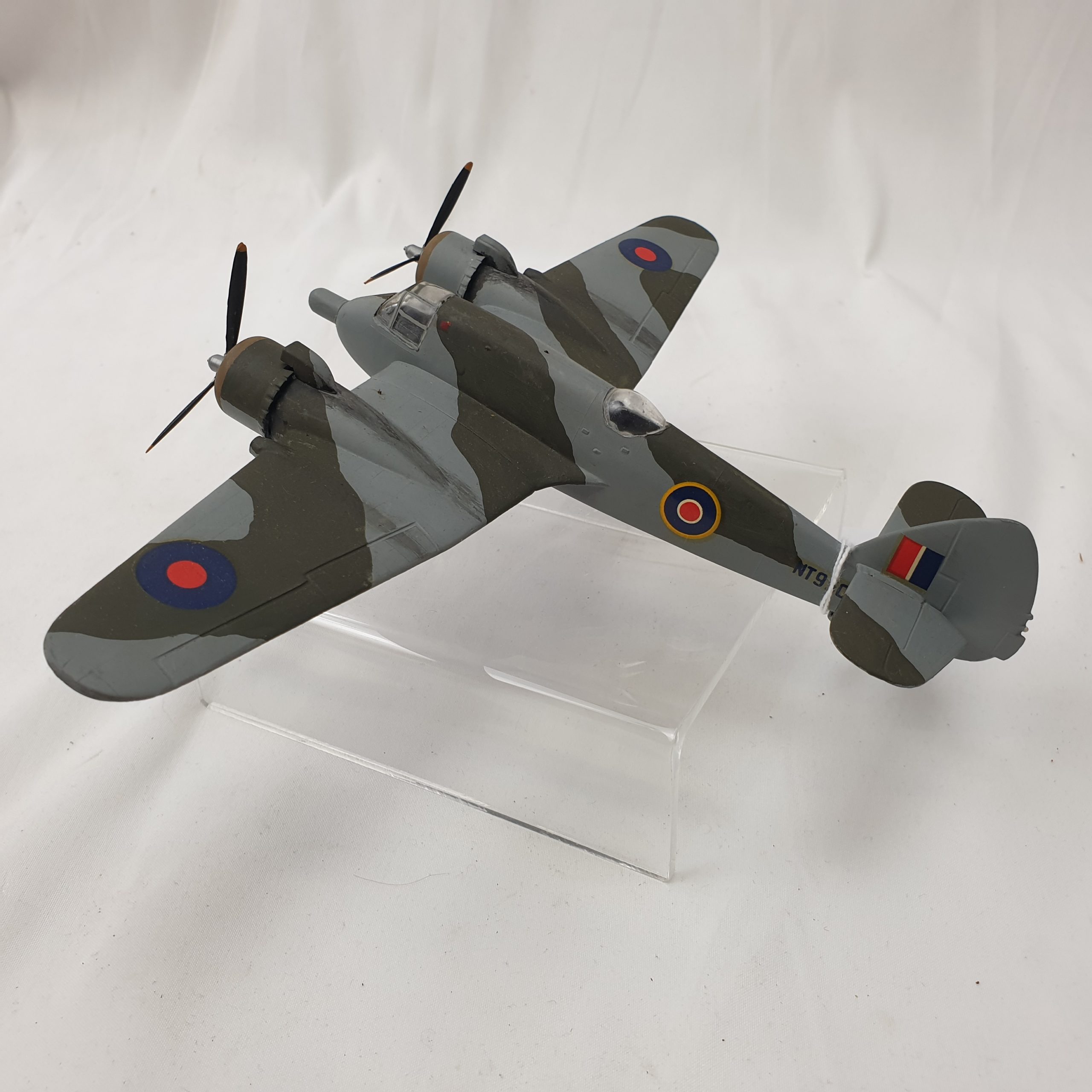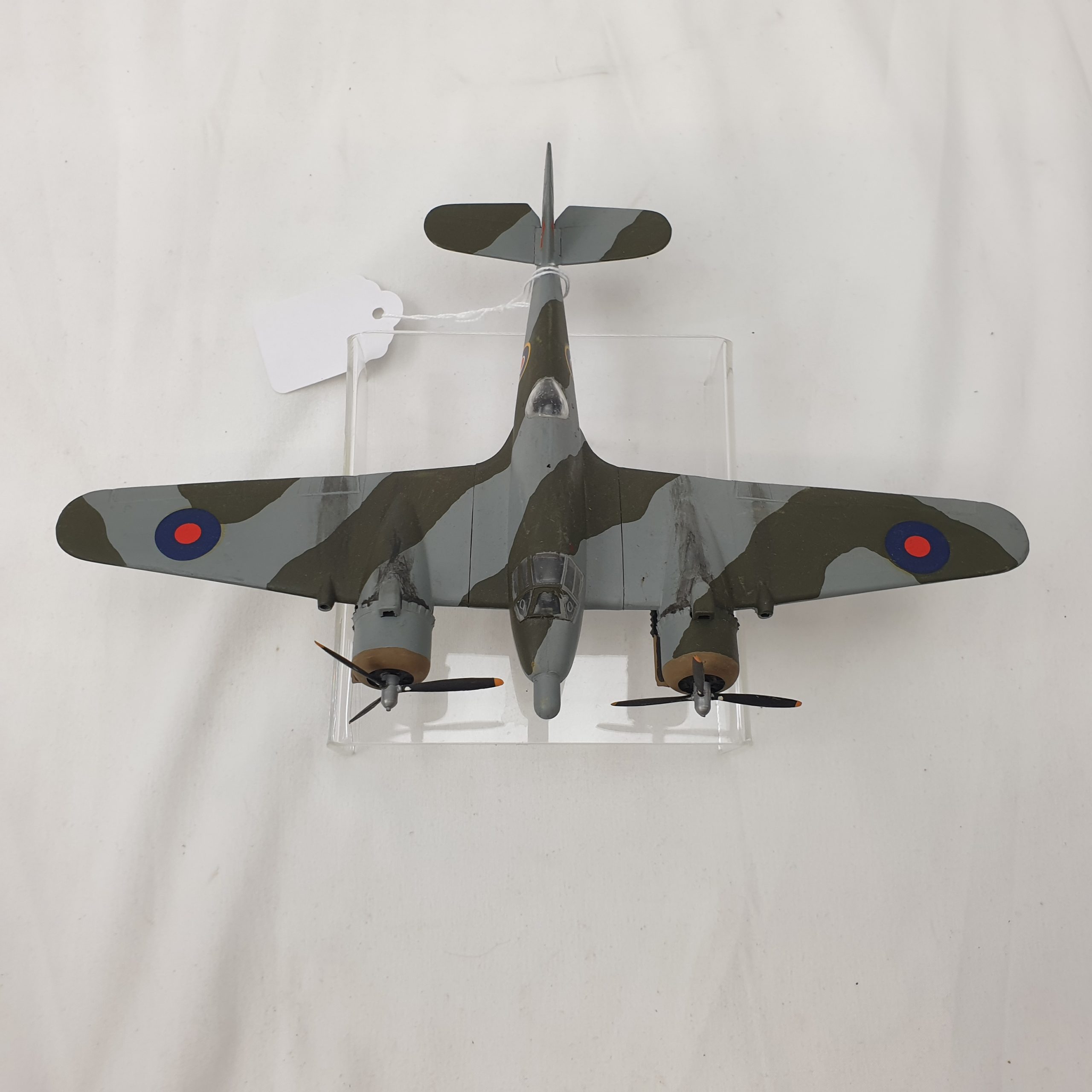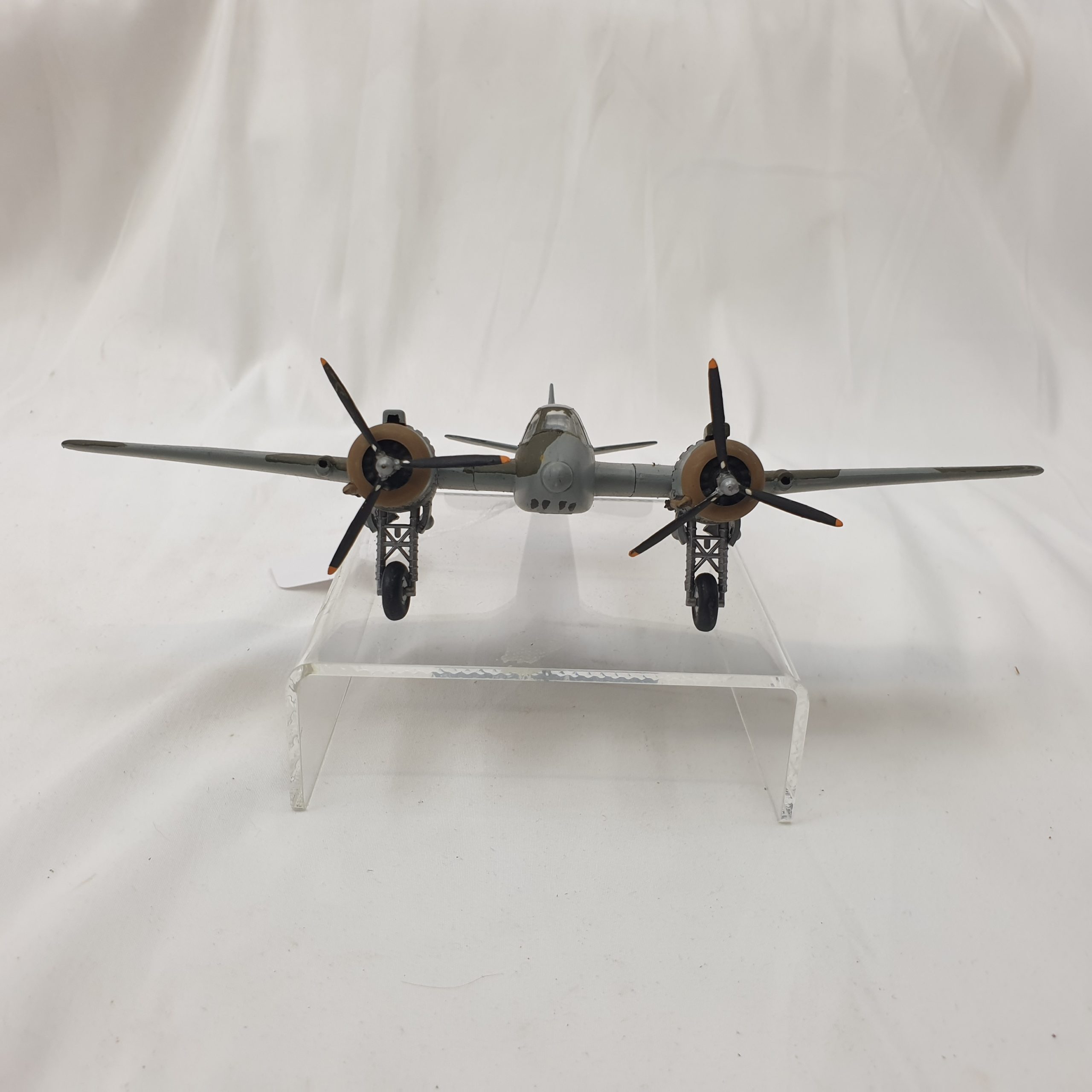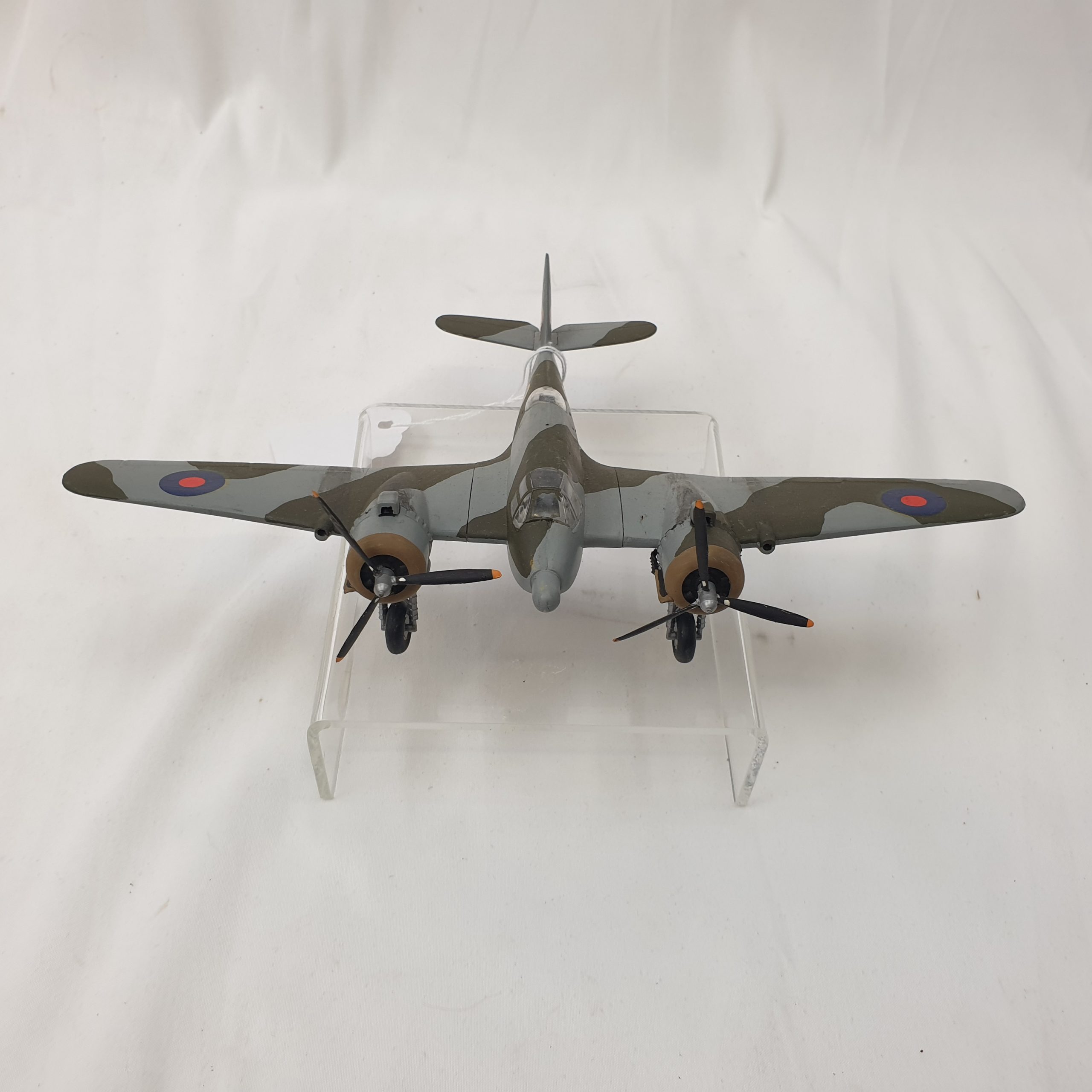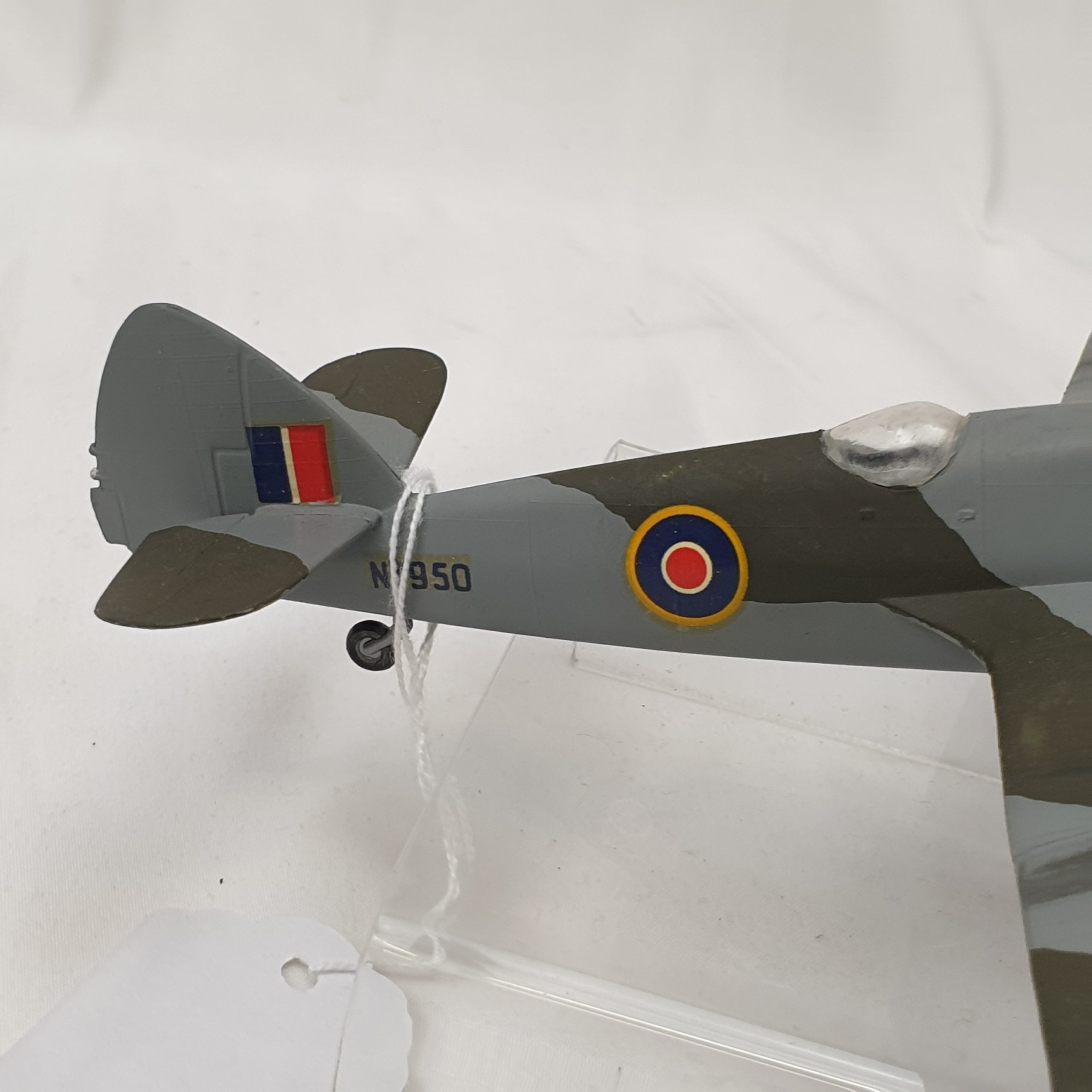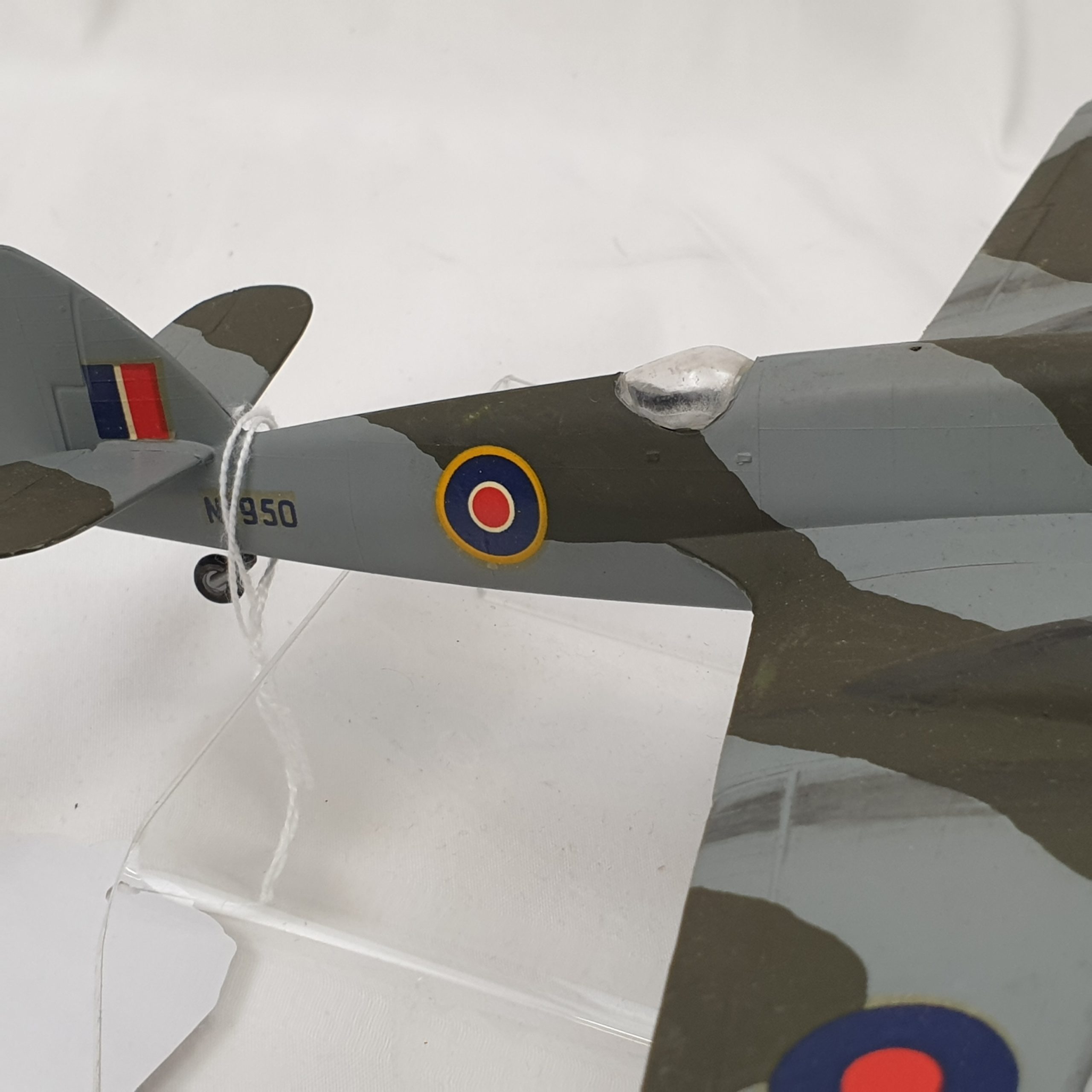~ Model of a Bristol Type 156 Beaufighter Aircraft ~
The Bristol Type 156 Beaufighter was a versatile and heavily armed British twin-engine aircraft used during World War II. It was primarily employed as a long-range night fighter, but it also served in various other roles, including ground attack, torpedo bomber, and reconnaissance. Here is a brief history of the Bristol Beaufighter:
Development:
Origins: The Beaufighter’s development can be traced back to 1938 when the Bristol Aeroplane Company decided to adapt the Bristol Beaufort torpedo bomber into a heavy fighter. The goal was to create a fast and heavily armed aircraft capable of intercepting and destroying enemy bombers.
Design: The Beaufighter had a twin-engine configuration with a crew of two (pilot and observer/navigator). It was powered by two Bristol Hercules radial engines. The aircraft featured a streamlined fuselage, which housed a considerable amount of firepower, including cannons and machine guns.
Variants:
Mk I: The initial production version of the Beaufighter, armed with four 20mm Hispano cannons and six .303-inch Browning machine guns. It was used for night fighter and ground attack roles.
Mk II: This version was adapted for the Coastal Command and used as an anti-shipping and torpedo bomber aircraft.
Mk V: Introduced improved Hercules engines, increasing the aircraft’s performance. It was widely used by the Royal Air Force (RAF) and other Allied air forces.
Mk VI: Featured increased firepower, with additional cannons and machine guns. This variant was heavily used for ground attack missions.
Mk X: Fitted with Rolls-Royce Griffon engines, this variant had improved performance and was used primarily for anti-shipping strikes and torpedo attacks.
Operational Service:
Night Fighter: The Beaufighter’s most significant role was as a night fighter. It was highly effective in intercepting and shooting down German bombers during nighttime raids over the United Kingdom.
Coastal Command: The Beaufighter played a crucial role in Coastal Command, where it was used to attack enemy shipping and conduct anti-submarine patrols.
Ground Attack: In the Mediterranean and Pacific theaters, the Beaufighter was employed for ground attack missions, strafing enemy positions and providing close air support to ground forces.
Notable Achievements:
The Beaufighter achieved notable success during the Battle of Britain, helping to defend British airspace at night against Luftwaffe bombers.
The aircraft was also instrumental in the destruction of German E-boats and other enemy shipping in the English Channel.
Post-War Service:
After World War II, the Beaufighter remained in service for several years, with some versions being adapted for target towing and drone control roles. It was eventually phased out in favor of more modern aircraft.
The Bristol Beaufighter is celebrated for its adaptability, firepower, and effectiveness in multiple roles during World War II. It played a significant role in the defense of the United Kingdom and the Allied war effort, making it one of the iconic aircraft of the era.
~ Dimensions ~
The wingspan is 24.5 cm and the length of the piece is 18 cm.


